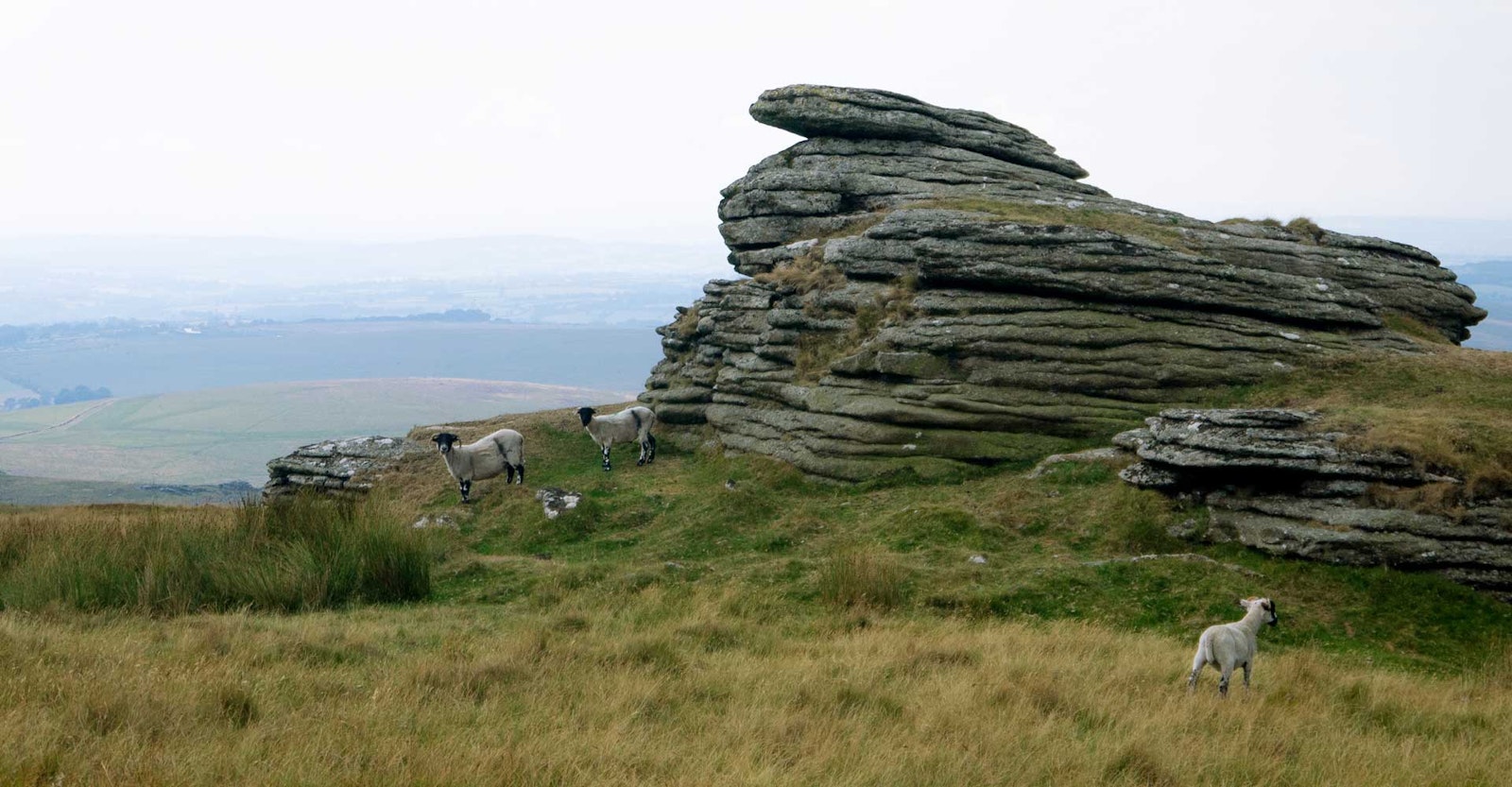Dartmoor National Park stretches over 590 square miles (950 square kilometers) of southwest England, an area about the size of London. Dramatic open vistas are dotted by huge, up-thrusting granite tors. While it appears wild and empty, it’s a landscape that has been shaped for millennia by humans—and their sheep. Many thousands still graze Dartmoor’s unenclosed common land, enduring the weather and the tourists.
Over time, the Whiteface Dartmoor and the Greyface Dartmoor with its lustrous longwool have both become rare breeds, and the hardy Scotch Blackface now dominates. However, products in local and online shops attest that farmers raise an amazing variety of breeds, including Welsh Mountain, Jacob, Shetland, and Icelandic (and crosses of these breeds).
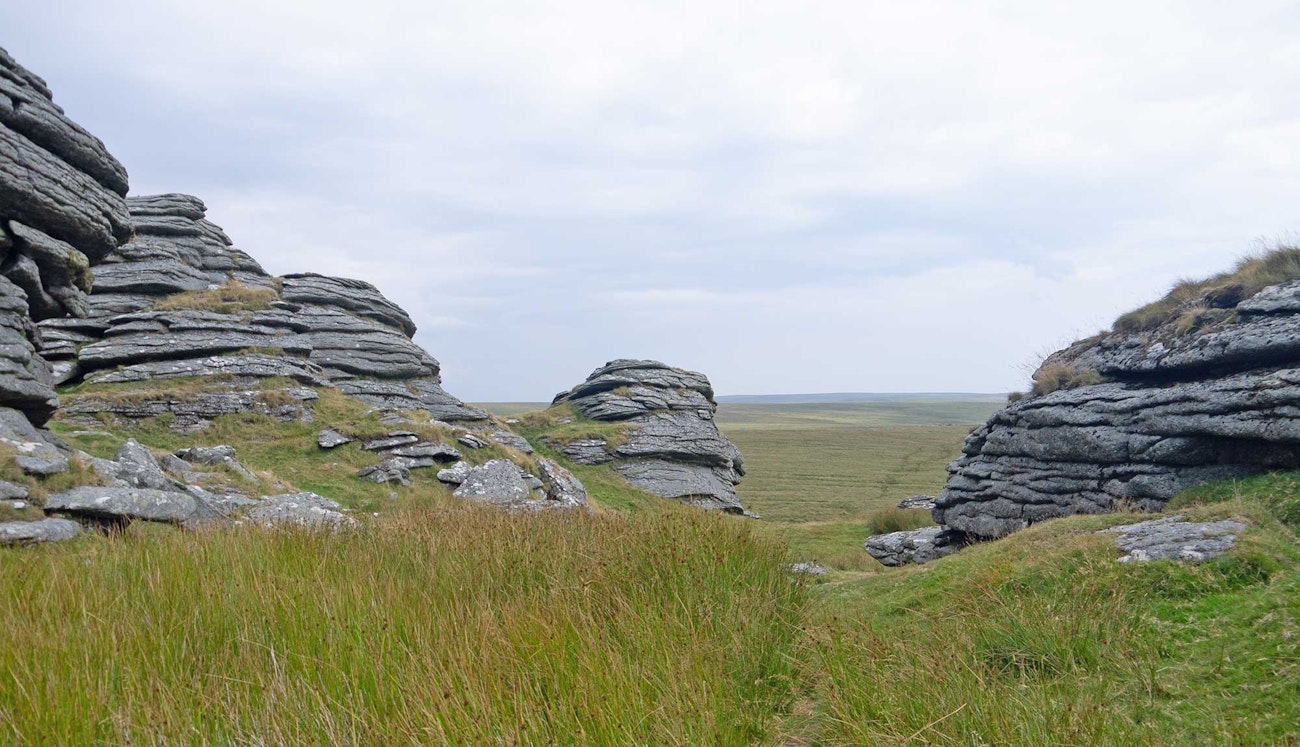 Rock formations and the surrounding landscape yielded tufts of wool that had been shed.
Rock formations and the surrounding landscape yielded tufts of wool that had been shed.
Hiking at the western edge of Dartmoor while on holiday, I spotted tufts of wool everywhere—even in the absence of snagging hedges and fences. On a whim, I decided to start collecting them as we walked. By lunchtime, I had a bag full of very dirty, twiggy wool. A surprising quantity was dark brown, often in large pieces that appeared to have been shed or rooed, rather than snagged. I’d never processed a fleece but was keen to try it out on a small scale. This seemed like the perfect, low-stakes opportunity; the wool was literally lying in the dirt! So what if I felted it in a tragic washing accident? I had nothing to lose!
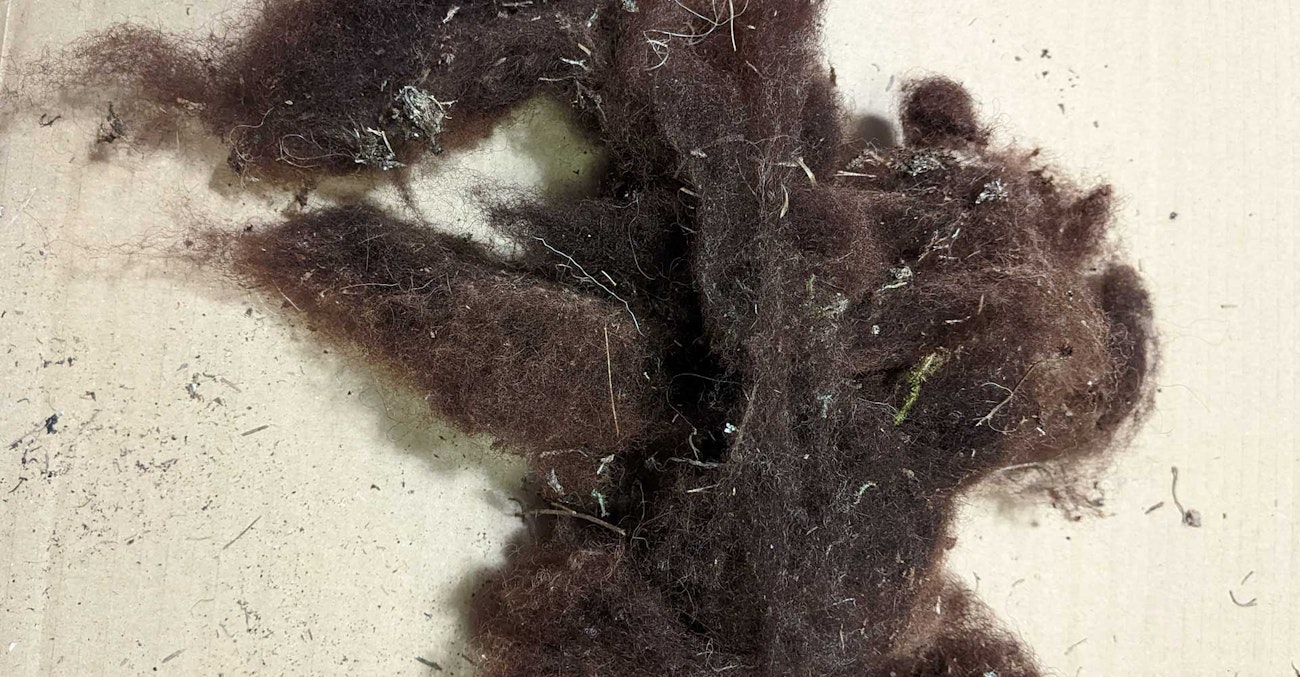 A close-up look at the wool that the author collected on Dartmoor
A close-up look at the wool that the author collected on Dartmoor
Back at home, I couldn’t wait to get started with my experiment. Armed with a bucket, a flick carder, and the audiobook of The Hound of the Baskervilles (for more Dartmoor atmosphere), I shook out my prize and got to work. After picking out the biggest mats and twigs, I gave the fiber several successive baths in a bucket with wool soap. Overnight soaking was highly effective in dissolving the finer dirt. Once dry, it was time to sort and card. Given the squashed and semi-matted condition of the wool, the flick carder was extremely effective and helped to disentangle, open up, and continue removing vegetation from the fiber. It was slow going to make the wool clean and spinnable (i.e., I needed a second audiobook). By the end of the carding step, I estimate that I threw out about 40 percent of what I collected—next time I will be more selective!
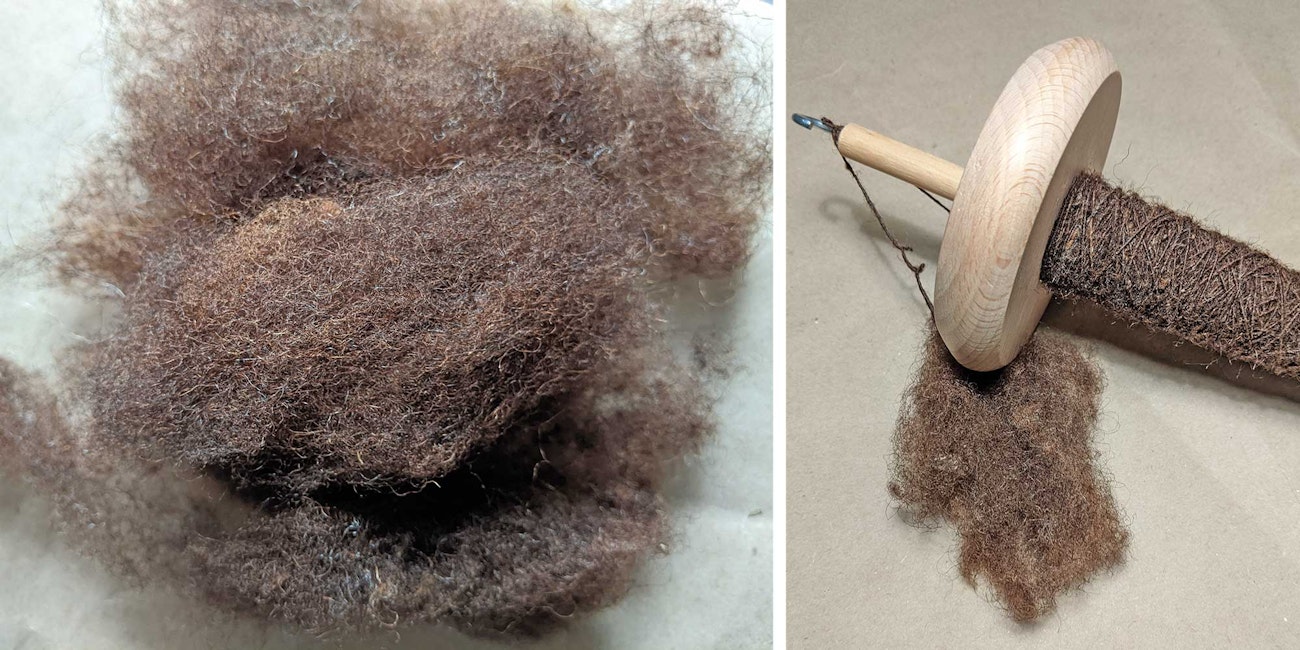 Left: cleaned and carded wool. Right: a surprisingly smooth spin.
Left: cleaned and carded wool. Right: a surprisingly smooth spin.
After carding, my gleaned wool now looked far more appealing, like a fluffy brown cloud. But what kind of wool was it? The dark color, staple length (10–13 centimeters), texture, and the fact that it had apparently been shed naturally all narrowed down the options. My best guess is Jacob or Shetland, as both can shed their wool and are currently raised on Dartmoor. I’ll never know for sure—the downside of using mystery wool!
I spun and plied my wool into a two-ply yarn using a top-whorl drop spindle. Considering its sorry starting state, it spun smoothly and evenly, and the finished product is reasonably soft with an appealing halo. My final result was 20 grams of yarn, on the borderline between DK and sportweight. I plan to use it for colorwork in a special hat or pair of gloves.
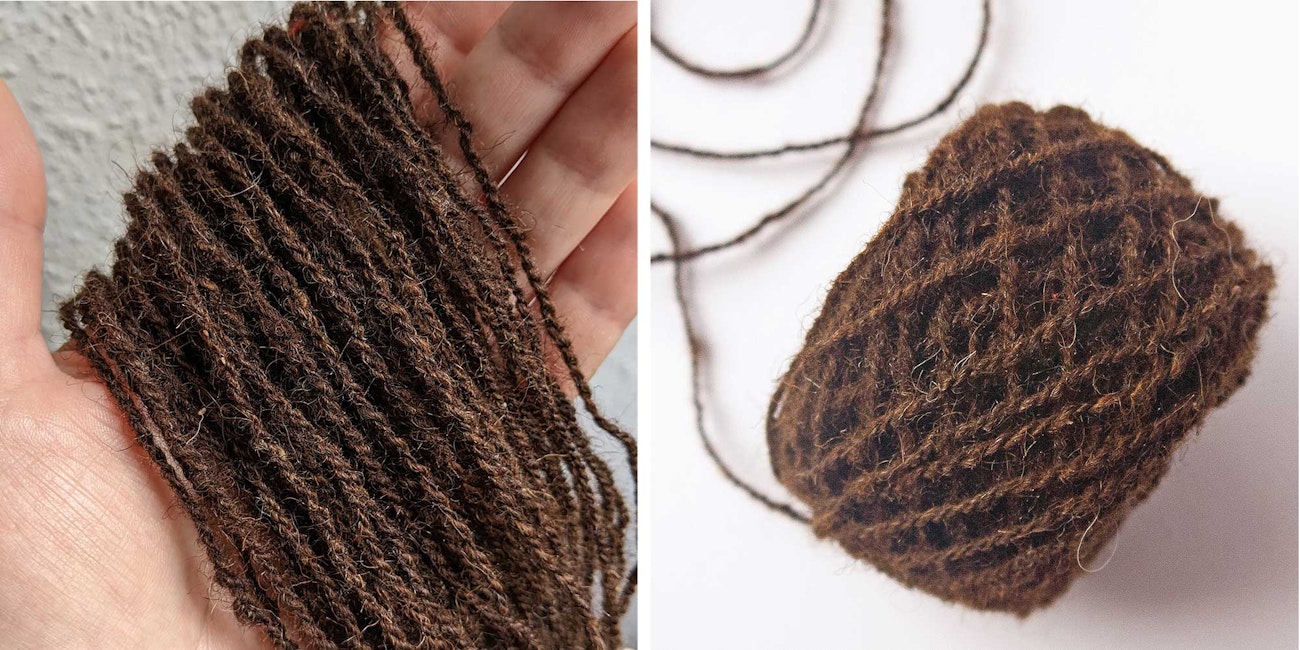 The finished two-ply yarn
The finished two-ply yarn
This was by far my most satisfying project of the year. It’s always exciting to feel like you got something for nothing! From wool in the dirt, I created a unique, memorable, and fun souvenir of my Dartmoor visit.
This article was first published in Spin Off Summer 2023.
Also, remember that if you are an active subscriber to Spin Off magazine, you have unlimited access to previous issues, including Summer 2023. See our help center for the step-by-step process on how to access them.
A. Alcorn is a self-taught spindle enthusiast and knitter. She works in scientific research and lives in England.

